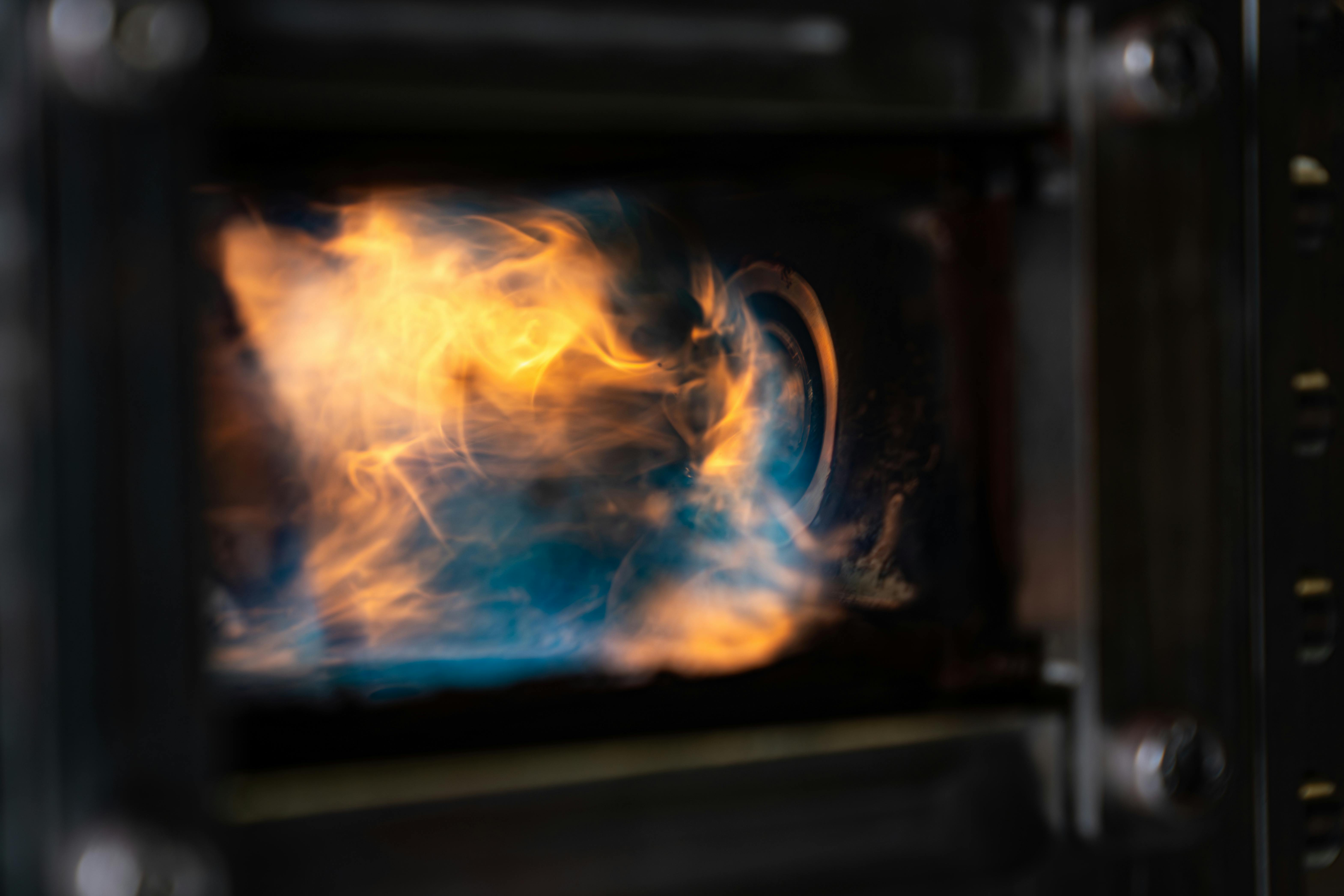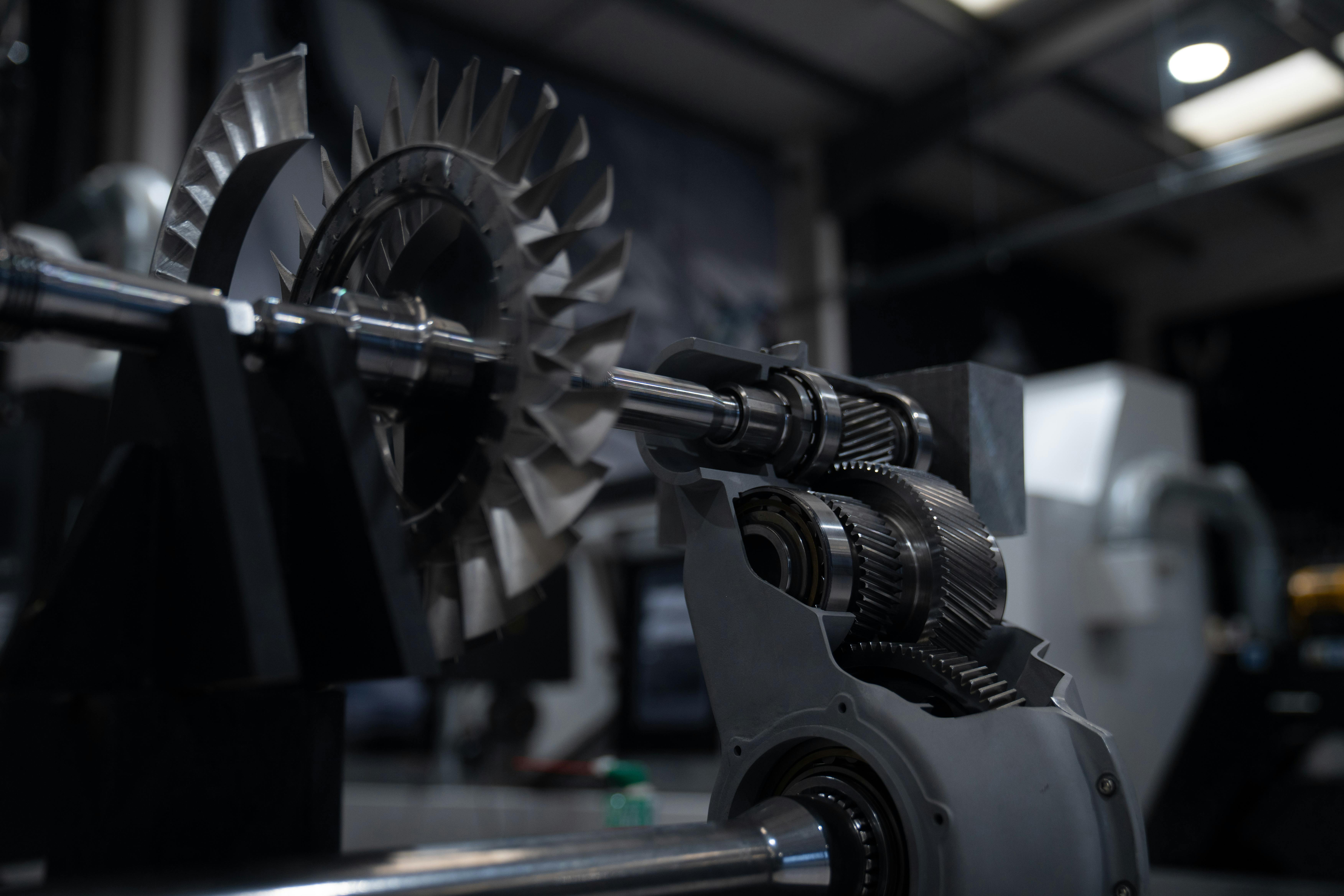GT50 Engine Developments
The iterative cycle – build, test, find problems, fix, re-test – is the core of our development process. From testing the starter generator system to refining the gearbox test rig, every element is being scrutinised to deliver a reliable and efficient engine.
1 Apr 2025
Starter Generator (MGU) Upgrade
Remember the Motor Generator Unit (MGU)? It's critical for starting the GT50 and generating power. Our initial testing was successful but revealed areas for improvement, particularly with the rotor position sensor and balancing the high-speed components.
Achieving smooth operation at incredibly high speeds (up to 40,000 RPM!) required such precise balancing with the original "bearingless" design that volume manufacturing became impractical. So, we've re-engineered the MGU with a more robust, traditional dual-bearing design.
While slightly more complex, it ensures reliability and manufacturability. We also designed, integrated, and validated a new rotor position sensor.
Testing with the new sensor and design is complete. We have validated the power management unit and calibrated the control systems. The system is now being tested under electrical load.
Speed Reduction Gearbox (SRG) Test Rig
A rigorous bench testing allows us to identify and resolve any potential issues before it reaches the engine, ensuring the SRG is ready for the demands of flight.
The rig simulates the entire engine drivetrain load – power turbine input (at 35,500 RPM!), tail rotor drive, and main rotor drive.
We run two gearboxes back-to-back under maximum torque, pushing them to their limits for a simulated 5,000 hours. This validates everything from the lubrication system and gear tooth contact patches to rotor dynamic stability.
The sophisticated test rig, featuring a high-speed drive motor and industrial systems mimicking engine functions (oil pumps, valves), is nearing final assembly.
Next steps consists of initial tests will calibrate the oil jets, ensuring precise lubrication. Then, we move to contact patch testing, performance and heat rejection analysis, and finally, the full 5,000-hour endurance run.

Fuel Nozzles & Combustion Testing
We're refining our unique duplex fuel nozzles and preparing for critical combustion tests.
- Fuel Nozzle : Alex is designing a dedicated hydraulic test rig to independently verify nozzle performance – measuring flow rates, spray patterns, and atomisation quality using advanced sensors and laser scanning.
- Combustion Validation: We'll analyse the interaction between the spray nozzle and the air swirler, ensuring stable and robust combustion across the engine's operating range.
Firewall and Inlet Advancements
- Firewall: Basic material testing is complete. We've also successfully tested ablative coatings. If the main firewall were ever breached, this coating expands with heat, creating a temporary insulating layer to protect the aircraft's structure long enough for a safe landing.
- Engine Inlet: As accessories were added to the engine front and integrated with the Gen 2 fuselage, we redesigned the inlet tract. The optimised radial inlet provides a large area for smooth airflow into the sensitive compressor, minimising pressure drops and integrating seamlessly with the airframe.

Compressor, Blades, and Shafts
- Compressor: We've subtly modified blade shapes, boosting mass flow and efficiency (now 2% higher!). We've also implemented a braidable coating on the shroud, allowing tighter tip clearances for maximum performance while protecting against potential titanium fires.
- Turbine Blades: We've made huge progress, moving from initial struggles to reliably casting blades with excellent fill and surface finish, right here in-house. Next steps involve switching to the final super-alloy and perfecting the crystal structure for optimal strength.
- Drive Shafts: These require being incredibly thin-walled yet strong. The manufacturing process (deep-drilling, heat treatment, hard machining) is complex, and heat treatment can cause warping. Mick and the team have developed sophisticated machining techniques ensuring the final parts meet exacting tolerances. The main engine drive shaft is currently undergoing this process.
JOIN OUR GROUP PRESENTATION
Are you interested in the HX50? Book your spot in our group presentation and learn why the HX50 will be better than your current helicopter.
What's in the presentation
Who
Mischa Gelb (aka Pilot Yellow) and Ruben Dias
What
Exclusive full details about the HX50 not yet available to the public
How
30 minutes presentation + Q&A
Be part of the journey
Get all the relevant news and updates about the HX50 delivered to your inbox.

HX50
Exterior Concept
Interior Concept
GT50 Turbine Engine
General Aviation 2.0
Hill Digital Cockpit
News & Stories
Technical Details
Range Simulator
Journey to HX50
ADDRESS
Hill Helicopters
Unit 3, Shackleton Way
Stafford, ST16 1GY
United Kingdom
Contact
General Enquiries:
+4401384590700
Accounts:
+4401384590700
Sales:
+4401889228040
hello@hillhelicopters.com
ADDRESS
Hill Helicopters
Unit 3, Shackleton Way
Stafford, ST16 1GY
United Kingdom
© 2025 HILL HELICOPTERS